As there was some mild interest expressed in regards to how I create my mixed media pieces, today I am going to write a little about the process. I hasten to add that I am by no means an expert – really when it comes to anything, including but also especially art – and my goal here is not to instruct as much as it is to hopefully inspire you to experiment with different ways of expressing your creativity. The idea of mixing decoupage and acrylic painting came to me out of the blue; I have no idea if it’s a thing that people do (probably? Maybe? If they don’t, should I be worried?) but it’s a thing that I’m really enjoying at the moment. And enjoyment, at the moment, is a precious commodity. It’s easy to fall into the trap of denigrating the things we enjoy as being frivolous or silly in challenging times, but we shouldn’t. If Animal Crossing brings you joy, Animal Crossing is a Good Thing. Ditto for sticking paper cut-outs onto canvas and slapping on some paint.
Speaking of which …
Let’s walk through the process of making The World.
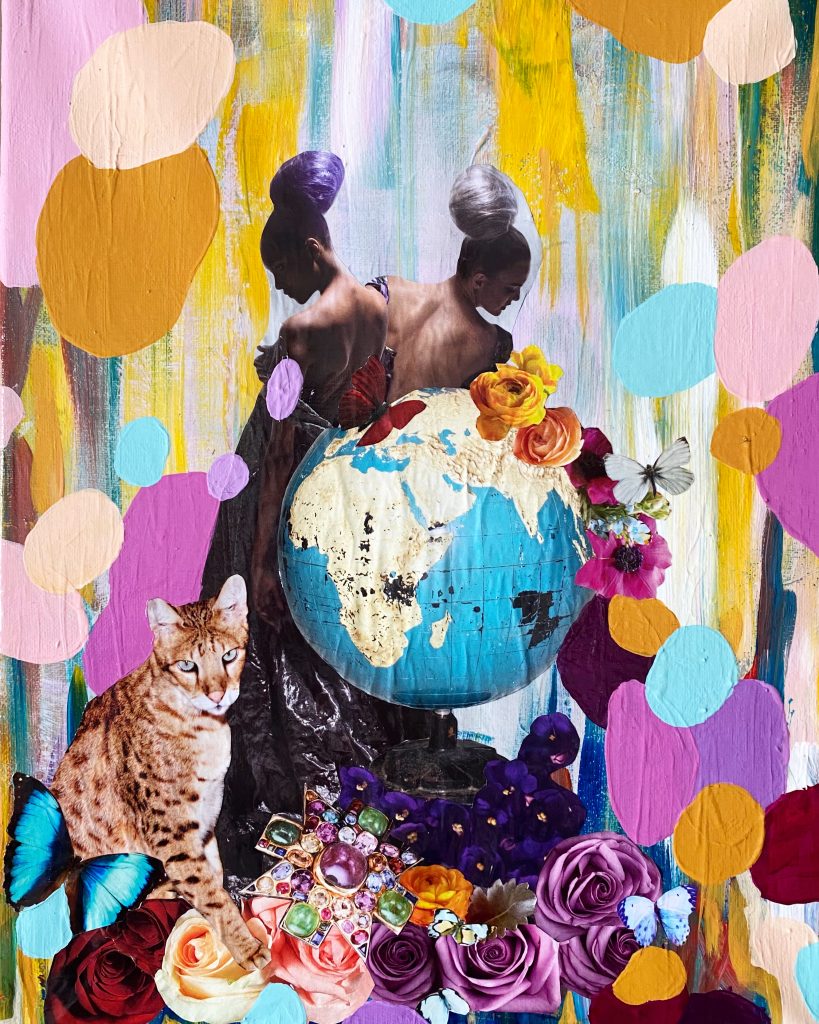
To do any sort of decoupage, you will need as much “raw material” – preferably in the form of fashion or other glossy magazines – as possible. “Mining” for useful images is somewhat time-intensive but not unpleasant; I flip through my source material looking for mainly 2 categories of images: (1) ones that catch my eye or are visually arresting in some way; and (2) ones that provide useful “filler” material. Filler material is stuff that can be used to complete a “tableau” – personally, I like flowers, animals, butterflies, and similar items. Filler is useful not only to add variety and colour to a composition, but also because images are often incomplete in magazines; they can be inconveniently cut off, have weird edges, etc. A filler piece can be useful to disguise such imperfections.
Some magazines are better than others for providing useful materials. For the type of work that I like to do, I prefer Vogue and Harper’s Bazaar (especially the UK editions) although I’ve also found material in Elle, Marie Claire, InStyle, and even my old Cosmo magazines from the early 2000s. Don’t judge me. I used to be an inveterate hoarder of old magazines – they’re expensive to buy, why would I just throw them out? – which is a handy thing to be if you’re getting into decoupage. I actually regret doing a serious purge of some of my lesser collections a while back because I bet they would have been useful too. In my experience, you need a lot of magazines to get even a modest amount of useful images. This can be a somewhat expensive hobby. It’s one of the reasons why I can’t wait for thrift stores to re-open, so I can load up on $1 magazines to my heart’s content.
When I source images, I don’t have a particular piece in mind. Once I have collected a good amount of images, then I go back and look through them to see what “connections” I can make. I might have a “theme” in the back of my mind, but I also just look for images that go well together and that create a theme of their own. For The World, I knew I wanted to use a large image of a vintage globe; “on the nose”, yes, but I love globes. I was also drawn to an image of 2 women with fun, ball-like hairdos.
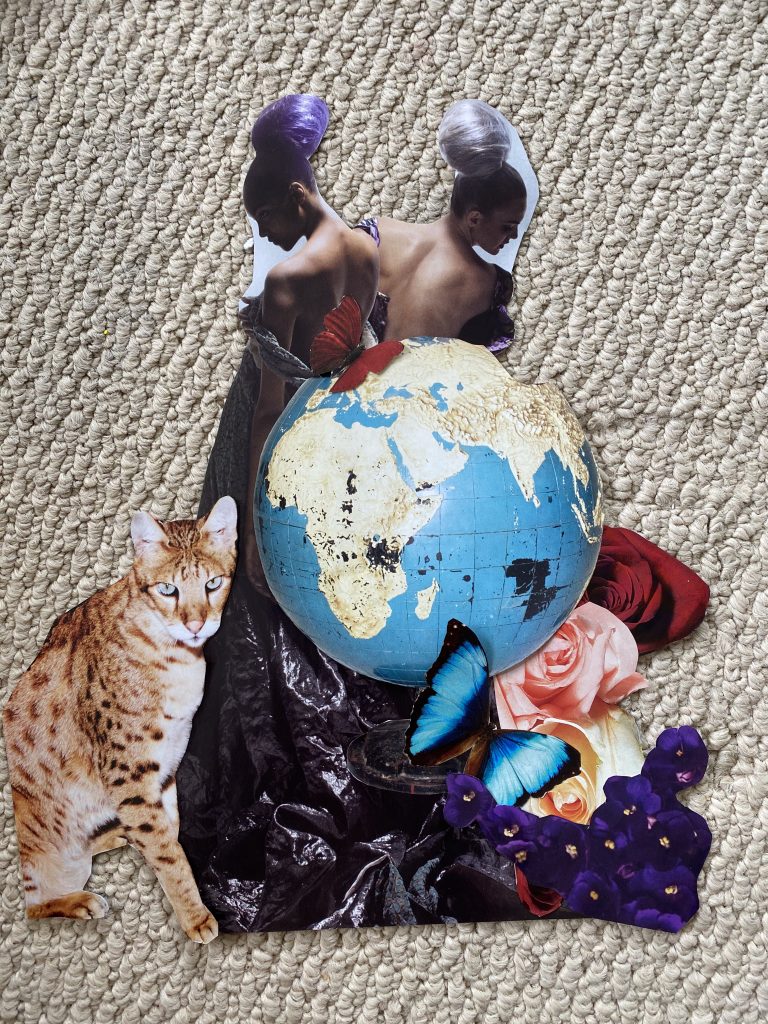
You can see here the importance of “filler”. The globe image had imperfect edges (you can see one of the gouges on the right hand side, I had not covered it yet). There was also a stark straight edge where the dress of the woman on the left ended. It took some time to figure out the composition:
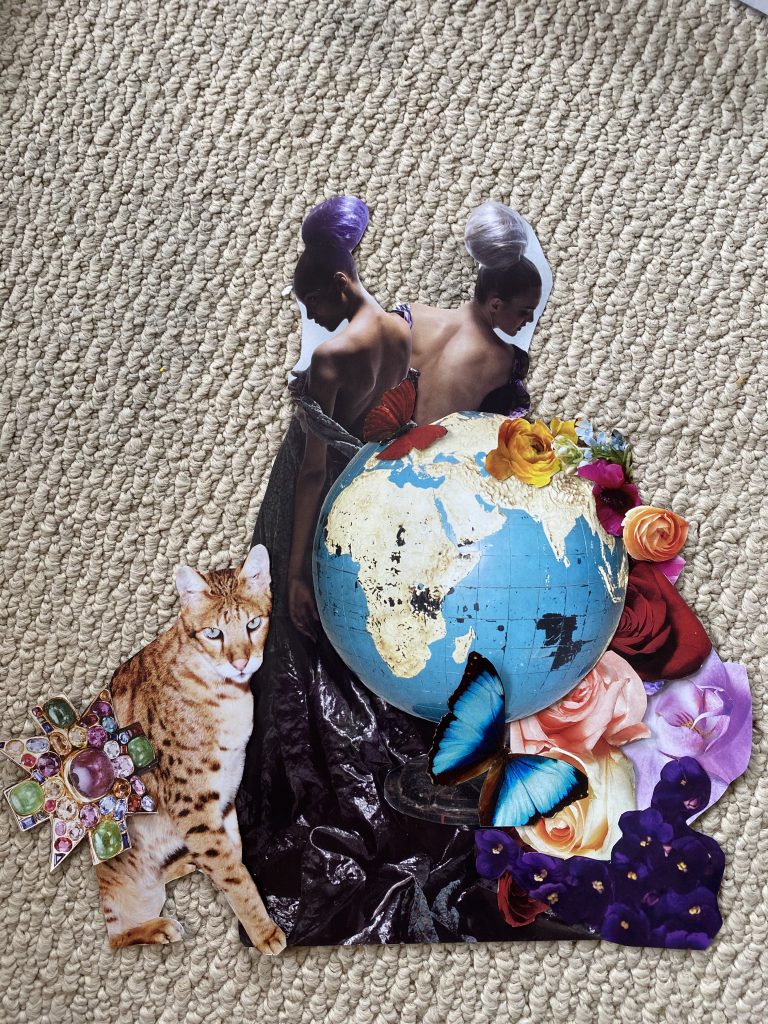
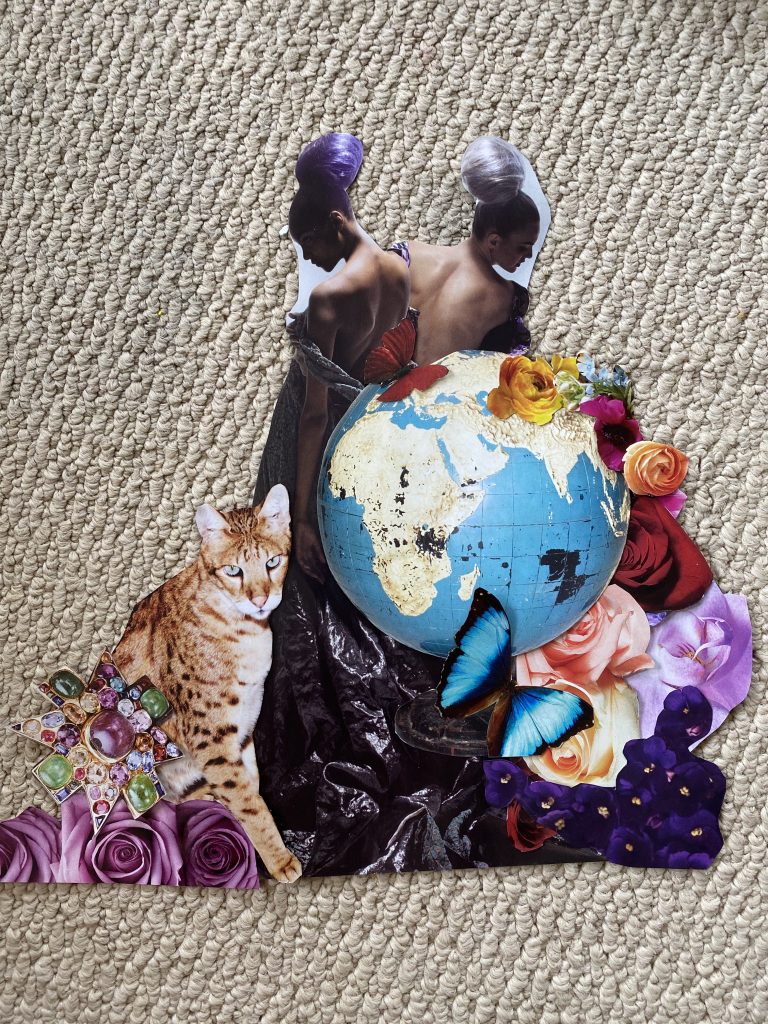
Then I did a rough mock-up of the placement on the canvas.
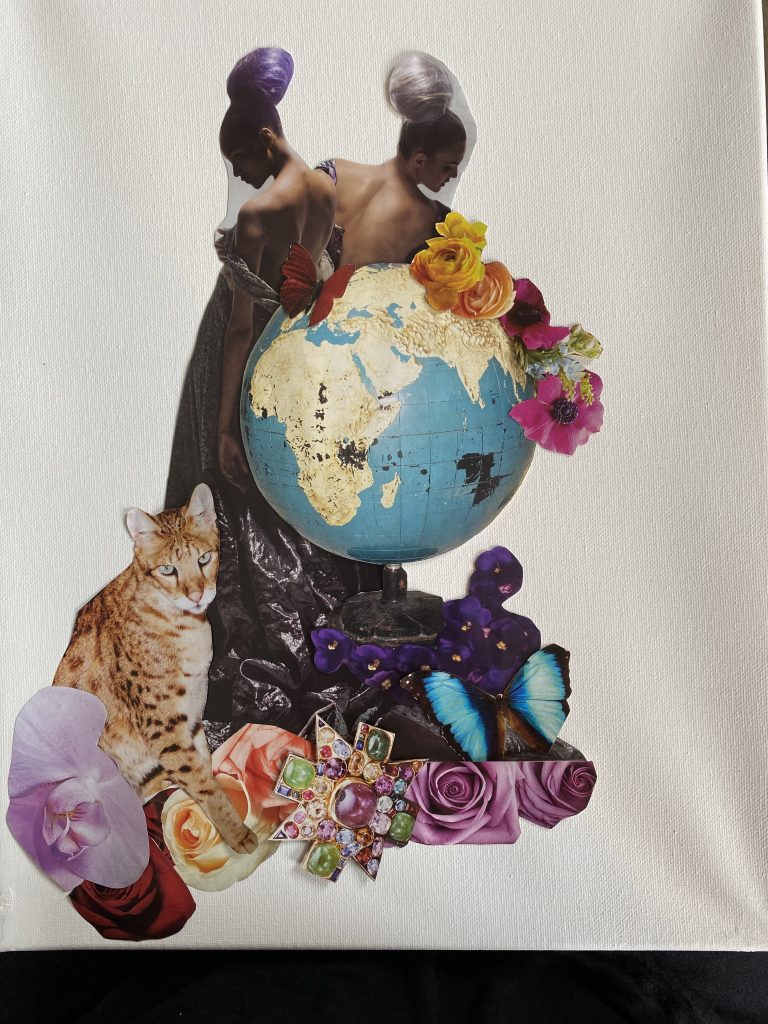
Once more or less satisfied with the composition, it’s time to get painting.
I have always struggled with abstract painting, so working on this series has been an interesting learning process for me. I can’t visualize my abstract paintings. I don’t know if other people can – i.e. if they paint what they see in their mind’s eye – but I can’t. It used to stress me out. Painting without a plan, I call it. I’ve had to learn to just go with it. I pick the colours I think I want to use (and, spoiler alert, these often change as the painting progresses) and start throwing stuff at the canvas. And keep adding until things start to look “right”. The nice thing about acrylic is that you can layer quite a lot of it; there have been times when I completely painted over the “first pass” because I hated it. I used to consider that a failure, but I’ve come to love the depth that layers add to a piece. Sometimes, all you can see of a particular layer is one tiny peek of colour, but it adds something special to the finished piece. The hard part is being patient and waiting for the paint to dry; sometimes I’m too eager to move on to the next layer to build on the piece, but then all that happens is that colours get muddy.
Learning to wait was actually an important part of the process. I leave the piece sitting on my easel for a day or even two, and look at it occasionally. I let it tell me where it needs to go next. Here are a couple of early stages of The World:

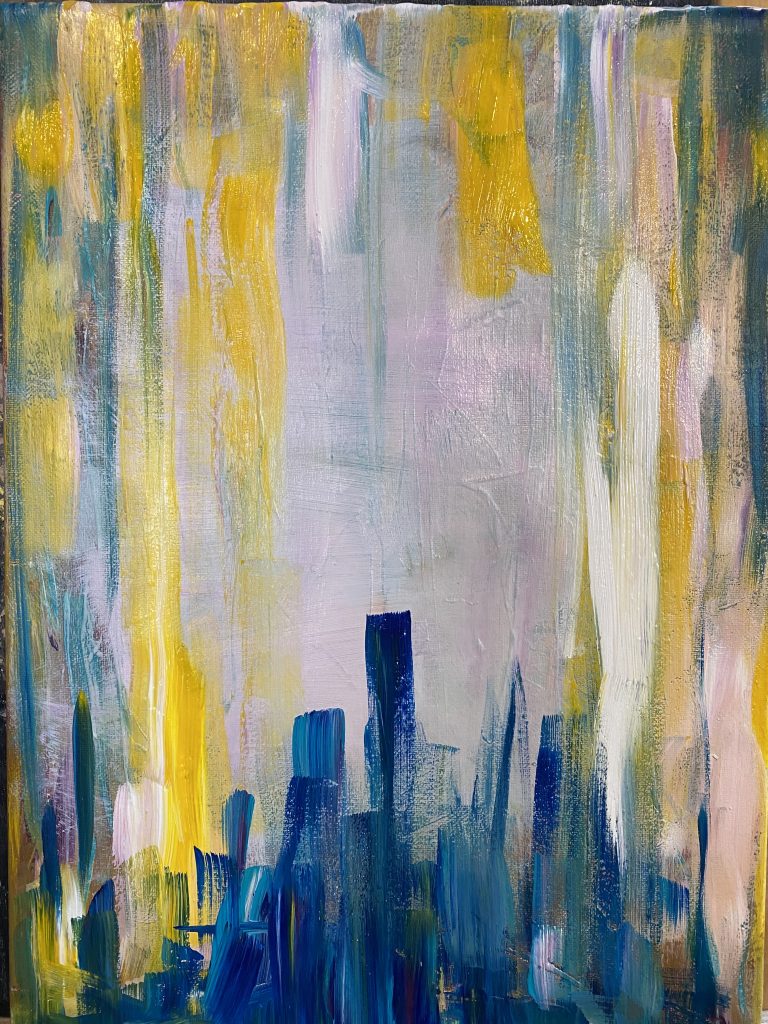
Shortly after that second pic is when I added the cut-out images to the painting. The timing of this varies from piece to piece. Sometimes I wait until close to the end, sometimes I add them quite early on because I need to incorporate them more substantially into the painting process. In this case, I also changed the composition slightly at the last minute. Here is how it looked like after being glued:
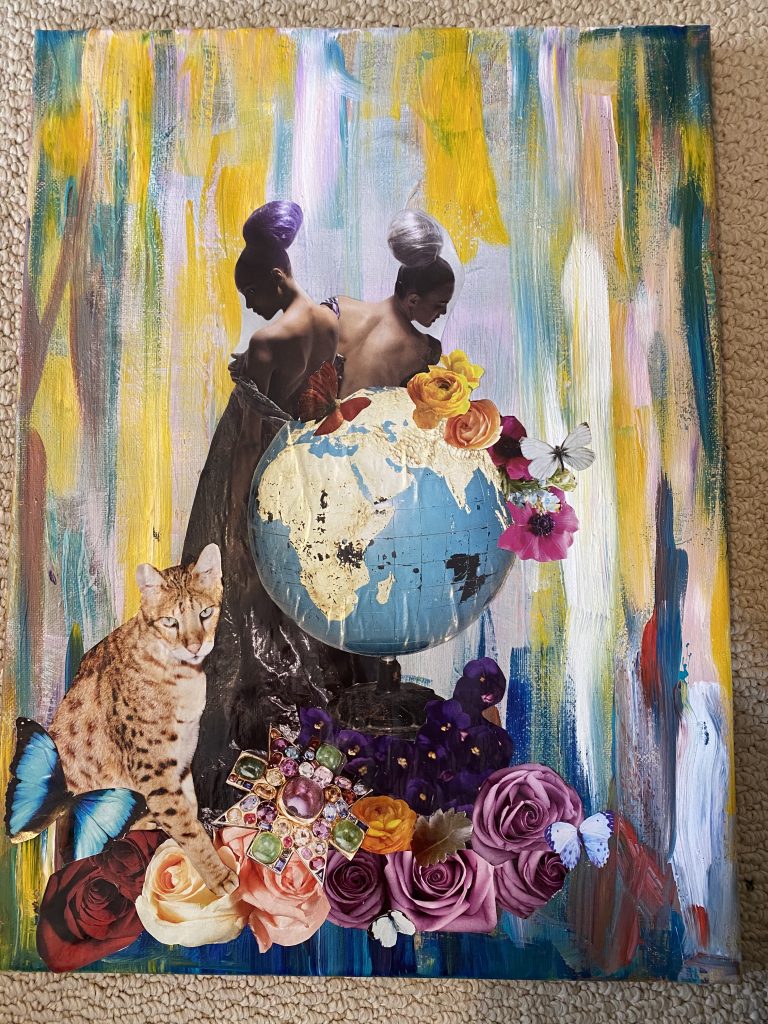
Then I went back to painting:
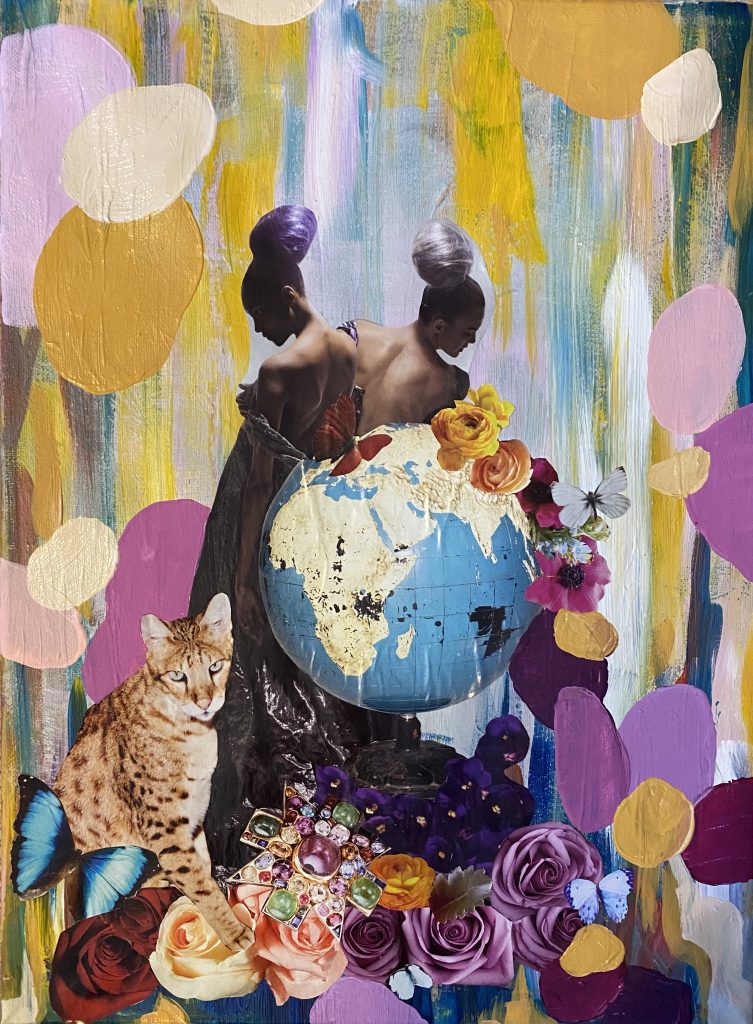
I loved how this was coming together, but it still felt like something was missing. Sometimes, less is more. Sometimes, you gotta go for more. Here is the finished piece again:
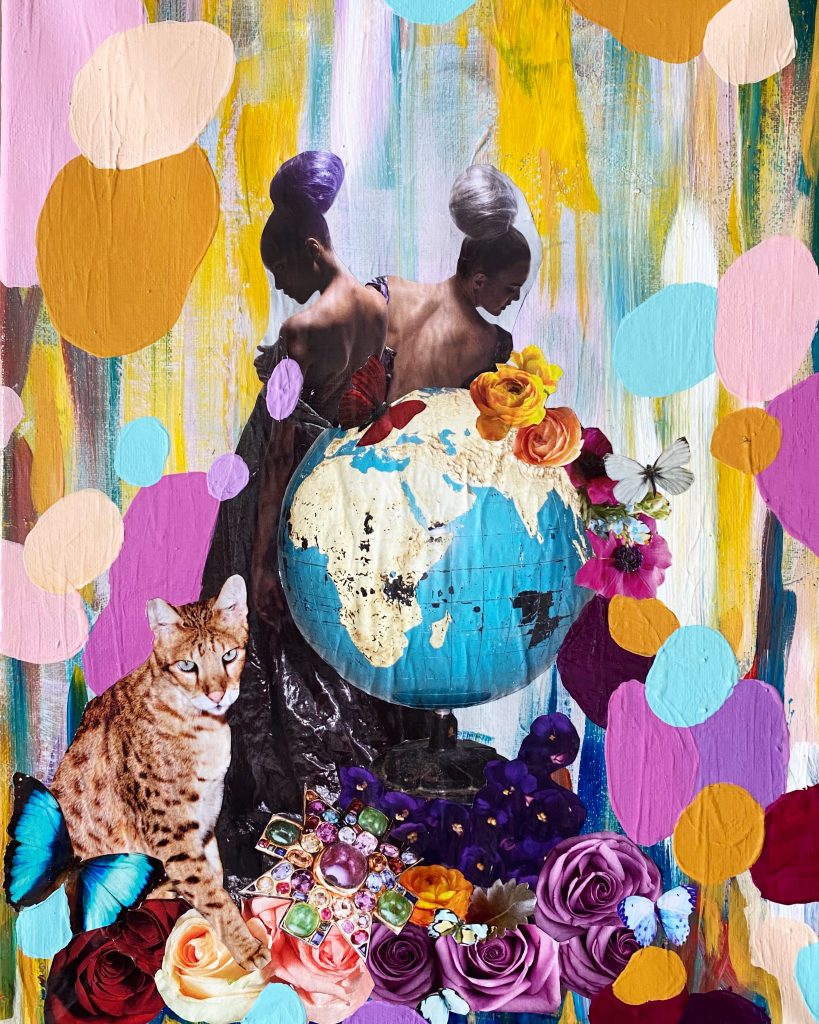
I add 2-4 layers of clear gloss varnish to each piece to eliminate some of the contrast between the glossy paper and the painted surface, and also to protect the decoupage. And that’s it.
Happy to chat in the comments!

What of beautiful image of The World card!
Thank you, Lizzy!
I love it! Thanks for sharing your process. I’m going to make an effort to create a piece, once I’ve collected enough magazine sources. After I saw your original post, I wanted to give this a try and I was looking around the house for a piece of canvas I had bought years ago for an art project I thought I would do with my son, but never occurred. I think the canvas was donated to the GW.
What is the name of the varnish you use? And do use any kind of glue?
I use Liquitex gloss varnish. I’m going to experiment with satin finish as soon as I get the supplies. For glue, I think you can use pretty much anything.
I really like the colours. Do you mix your own or use straight from the tube? What brand of paint?
Both. I use a variety of brands – Montmartre, Liquitex, Winsor & Newton, DecoArt. I think I’m going to shift to using more Liquitez going forward – it’s pricier but I like the consistency (not sure that’s the technical term) better.